Update: Find out the latest on the 50 Years of Text Games book!
Note: this article has been revised from its original form.
Research continues for the 50 Years of Text Games book and its introduction, covering interesting ancestors before 1971. I recently learned an interesting fact about early computer game history that to my knowledge hadn’t previously been reported on, and shared it in a Twitter thread today. This is just one of several cool stories that are going into the book’s introduction! I remain incredibly excited about the book form of this project and hope you’re looking forward to it, too.
One of the first complex computer games, a military wargame called HUTSPIEL (1955), was based in large part on the work of a woman, Dr. Dorothy K. Clark, a fact which to my knowledge has never been previously reported. #50YearsOfTextGames Thread!
HUTSPIEL has almost always been credited just to the US Army, but a bibliography dive revealed Clark as one of five authors on the original report writing it up (the author list is alphabetical—while it wasn’t a consistent practice among the research group she worked at to alphabetize author names, some of the other papers from the group do follow this practice). Thanks to a librarian at the US Army War College I've acquired a document scan of this report.
I've uploaded the full HUTSPIEL report, which I believe to be in the public domain as taxpayer funded research, to archive.org. (Note: here’s a backup link.) Incidentally, the report probably contains a detailed enough description of HUTSPIEL that it could be reimplemented—by someone more comfortable with differential equations than me!
So, what was HUTSPIEL? It was one of the first complex interactive games to run on a computer—nearly everything before was an adaptation of an existing game that could run on paper, like Checkers or Tic-Tac-Toe.
One exception was RAND's 1952 "Project Simulator," a huge wargame-cum-LARP for dozens of players: but this "cannot really be classified as a complete computer game" according to historian Alexander Smith since it required human refs & interpreters. (To be clear, there certainly were “complete computer games” before HUTSPIEL, like Christopher Strachey’s draughts program, but nothing with a very high degree of complexity.)
HUTSPIEL ran on its own & let two players, Red and Blue, control both sides of an imagined USSR/NATO conflict in Europe. It played out in accelerated real time, though either player could pause to issue their orders.
Most 50s computers were punch-card driven batch processors with no real-time interaction, but HUTSPIEL was designed for a weird analog computer (the Goodyear Electronic Differential Analyzer) that allowed live adjustments to ongoing calculations.
Here's an image taken from the report which I've never seen before, of 2 people playing HUTSPIEL (probably in 1955). Players would read up to 40 outputs (troop strength, equipment damage etc) via ammeter gauges, and adjust their strategy using dials and switches.
Interestingly, the report notes that players usually didn't play the game confrontationally. Instead, each side would agree on a strategy in advance, and play to find out what happened! (Remember, this was a research project.)
So who was Dr. Dorothy Clark and how did she come to be involved in such a project? She was a 1937 Radcliffe PhD in history who made a career doing detailed statistical analyses of military conflicts, generalizing them into heuristics and equations.
From 1949 she'd been employed by Johns Hopkins' Operations Research Office, which collaborated with the military on various R&D projects. Its director had made a point of hiring from the humanities & across gender lines. (source, p67)
In 1954 Clark published an influential paper modeling the effect of troop losses on combat effectiveness, running thousands of numbers from seven real WWII engagements involving 44 infantry battalions to inform her models. The paper was still being cited as recently as 2017.
When ORO launched a program to develop a computer wargame, Clark doubtless seemed like a sensible person to be involved, digitizing her numerical models into a working, interactive simulation of the effectiveness of troops on a battlefield.
The report doesn't break down who worked on what, but Clark’s modeling work clearly provided the basis for the game’s core simulation (which was essentially just a series of evolving differential equations running in parallel). Paul Iribe, engineer and ORO computer expert, likely worked on the complex hardware (at a time when all computer games needed complex hardware). Nicholas Smith was a physicist who specialized in the rather grim calculations related to atomic bomb fallout, another component of HUTSPIEL; and Lloyd Yates was an instructor in aeronautical engineering who may have provided expertise related to the air combat portion of the simulation.
Clark would later contribute to another paper describing FOE, a non-interactive digital simulation of company-level engagements also based on her equations. The ORO (which had evolved by the ‘60s into the RAC, Research Analysis Corp) would go on to develop THEATERSPIEL (1961), a more famous early digital wargame.
Firsts are hard to claim, but HUTSPIEL was certainly one of the earliest complex computer games (each player had dozens of controls and readouts to monitor) & one of the first not based on an existing analog game. Dr. Dorothy Clark (center, pictured in 1966) deserves to be better known for her role in this groundbreaking project.

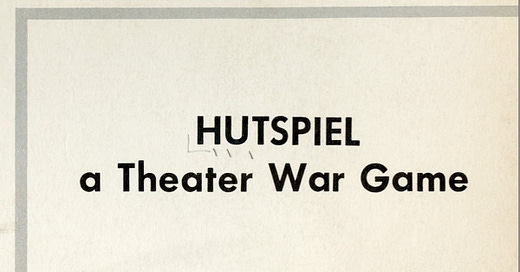



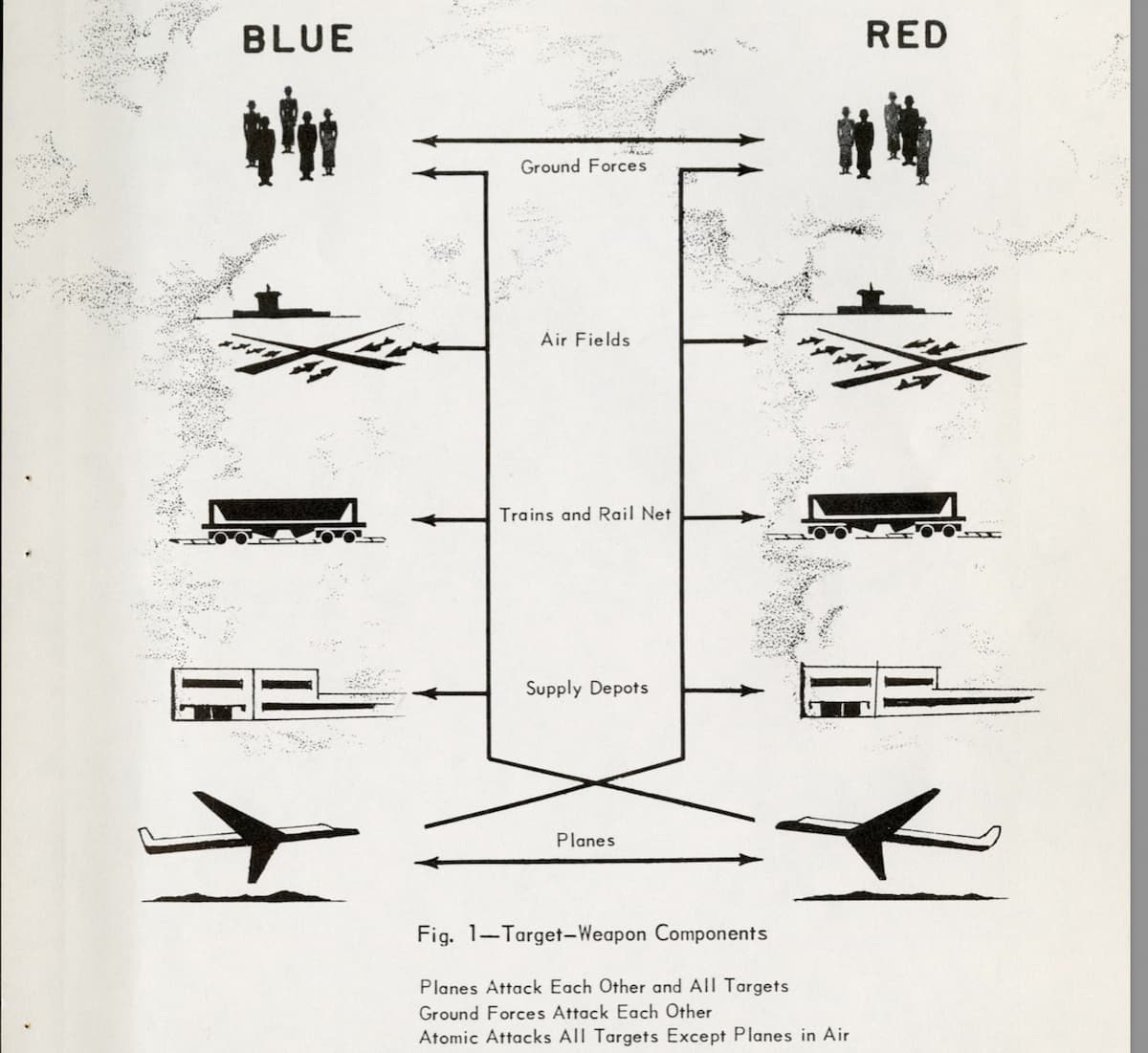
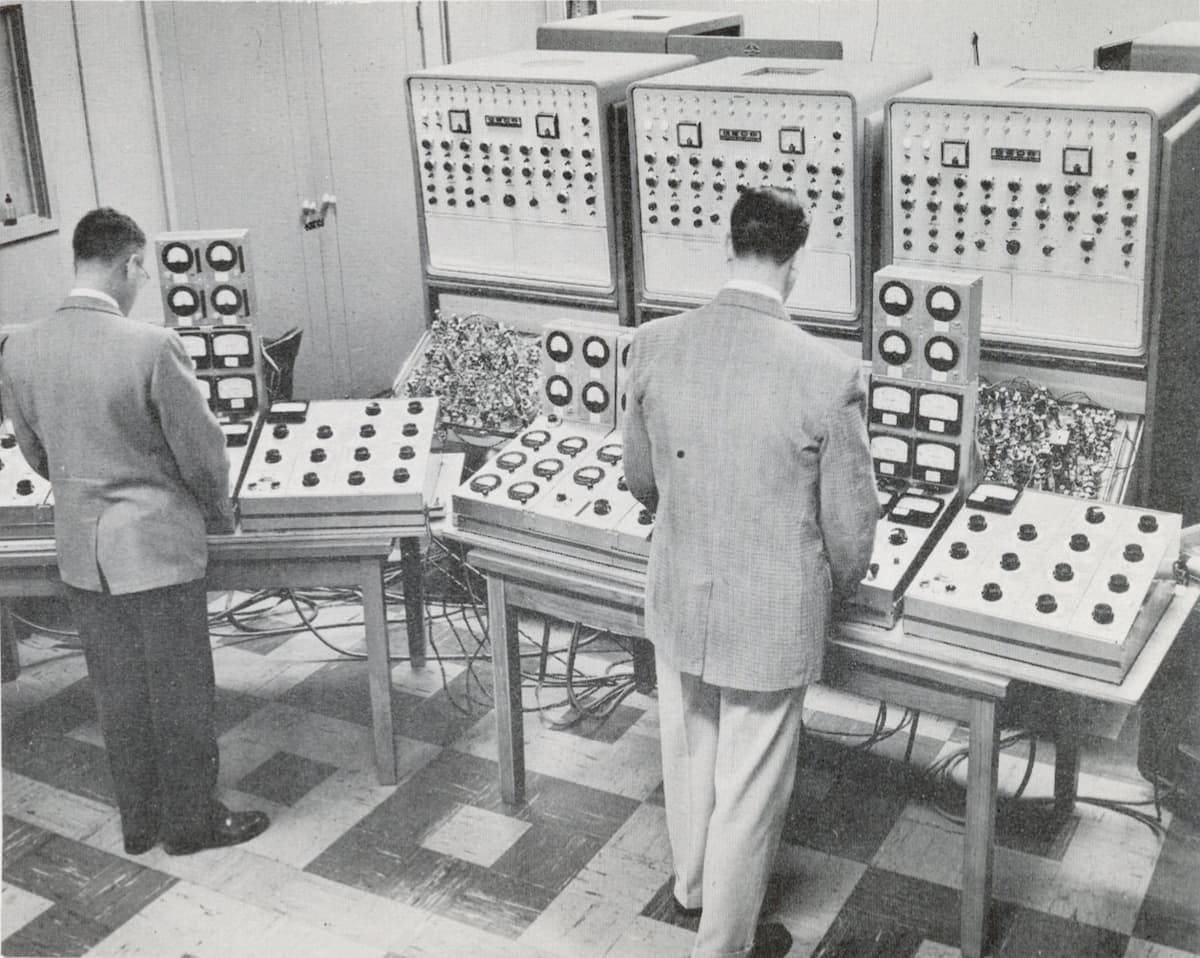
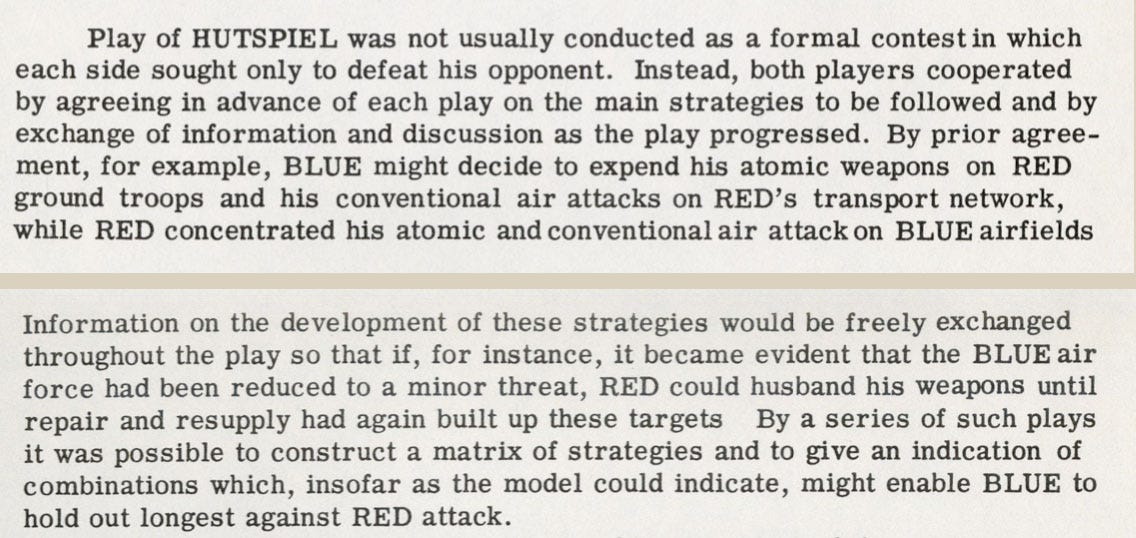
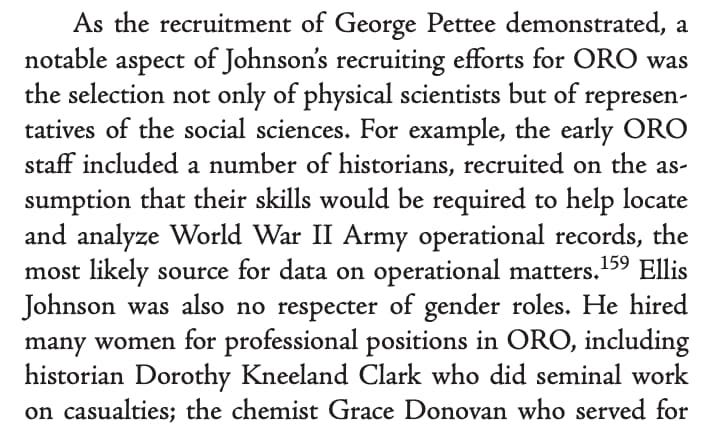
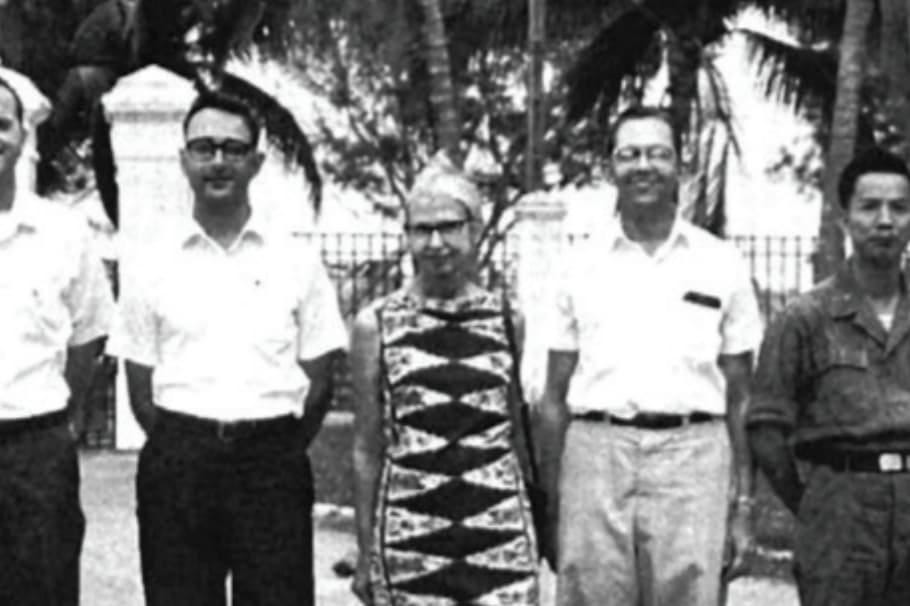
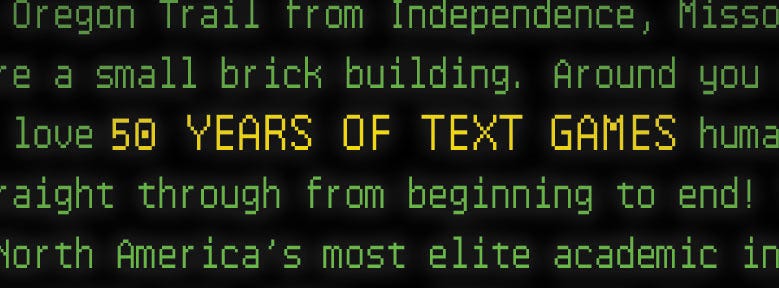
Another incredible find and great report. I can't wait for the book!!!
Have you seen "Top management decision simulation"? It was a computer business simulation wargame from 1957 (or earlier):
https://babel.hathitrust.org/cgi/pt?id=mdp.35128000152247&view=1up&seq=1